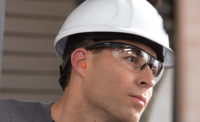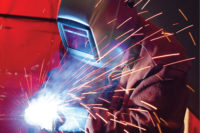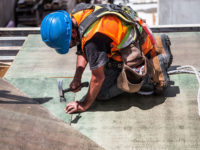Did you know that electrical workers are now required to wear arc rated head and neck protection while on the job? The most recent update to OSHA 1910.269 mandates that when working on or around electrical hazards, 360-degree FR protection is required. This includes the head and neck. Whether workers are looking to comply with OSHA 1910.269 (Electrical Power Generation, Transmission and Distribution Standard) or NFPA 70E (The Standard for Electrical Safety in the Workplace) choosing the best FR head protection for their application provides protection to one of their greatest assets.
Head protection solutions
Compliance can be achieved through a variety of different arc-rated head protection solutions. In general, there are three different hood systems to choose from: FR balaclava and arc rated face shield, FR balaclava and arc goggle, and a traditional “beekeeper” style arc flash hood. Each of the three arc flash hood options is available with a variety of choices in terms of protection level, material, style, and features. Before determining which head protection solution is the most suitable, a full hazard risk assessment needs to be completed to determine the potential risks associated with each task.
A balaclava and arc goggle combination is less common, but perfectly acceptable alternative to a “beekeeper” hood. It is not specifically excluded from the standards and has been deemed acceptable by industry experts and consultants. For compliance purposes, it is important to look for a combination that has been tested as a system to ASTM F2178, the test method for determining the arc rating for eye and face protective products. Additionally, NFPA 70E considers a balaclava and arc goggle an appropriate form of head protection only if the actual calculations have been done during the hazard risk assessment as opposed to relying on the table method.
OSHA warns that in any environment where shrapnel is a hazard, a balaclava and goggle combination should not be used. Providing it is used under the appropriate conditions, a balaclava and arc goggle system can make a comfortable alternative to arc flash hoods, even for incident energy risks as high as 40 cal/cm2.
One of the most common hood systems used in lower level arc flash protection is the balaclava and face shield combination. Whether or not this option is acceptable protection for a level of incident energy depends on the industry, specific hazard, and calculated risk. NFPA 70E deems this solution acceptable to use for calculated risks up to 12 cal/cm2, whereas, OSHA and industry experts find a balaclava and face shield combination acceptable to use for up to 20 cal/cm2.
A traditional “beekeeper” style arc flash hood is considered the ideal solution by many. It is particularly well suited for task based applications because it is one contained system that can be quickly pulled on for use and then taken off to be easily stored. Some wearers may be reluctant to wear this solution because it is perceived as hot and uncomfortable. There are a few specific ways to increase user comfort and combat this common misconception, which leads to an important point. The user’s work environment and comfort should be taken into account when selecting PPE.
Consider other factors
Giving consideration to details like temperature and lighting conditions can ensure electrical workers are prepared with equipment that not only protects them, but allows them to do their job effectively, without distraction. OSHA cites “use of bulky or non-breathable protective clothing and equipment” as a factor that puts workers at a greater risk for heat-related illness. If the cooling process cannot be carried out effectively the body will start to go into heat stress. Using the lightest available head protection (that still meets the proper requirements) can help to reduce the heat load on the wearer, lowering their risk for heat related illness. Conversely, switching to a heavier balaclava or fleece hard hat liner in the winter can help keep workers warm and compliant.
In regards to a “beekeeper” style arc flash hood, a ventilation system can significantly increase the comfort of the wearer by providing fresh air into the hood to keep them cool. Another way to increase comfort while using an arc flash hood is to add a soft, lightweight FR balaclava underneath. It may seem counterintuitive to add an additional layer, but an FR balaclava made from a light, moisture wicking material can increase comfort by wicking away sweat and helping to regulate temperature.
Lighting conditions should also be taken into consideration when making final decisions on head protection. An FR balaclava and arc flash goggle system has a narrow field of vision compared to the other options so it may not be the best solution for low-light conditions. A fully enclosed arc flash hood can be more difficult to see out of than a stand-alone face shield worn with a balaclava.
Calculate the risk level
In order to maintain proper compliance, an electrical worker must have 360-degree protection, including the head and neck. With so many options available it can be difficult to find the right protective solution. Safety should be the first factor when taking any product into consideration. The calculated risk level, specific task, and relevant industry standard are all necessary to make sure the chosen head protection is compliant. Additional considerations should be taken in order to provide the wearer with PPE that is both compliant and comfortable. Providing the wearer with PPE that is comfortable and well suited to the specifics of their environment and tasks can lead to increased compliance, ultimately resulting in a safer, more productive workforce.



